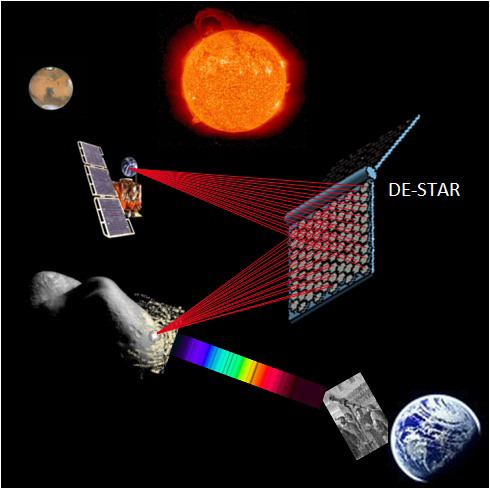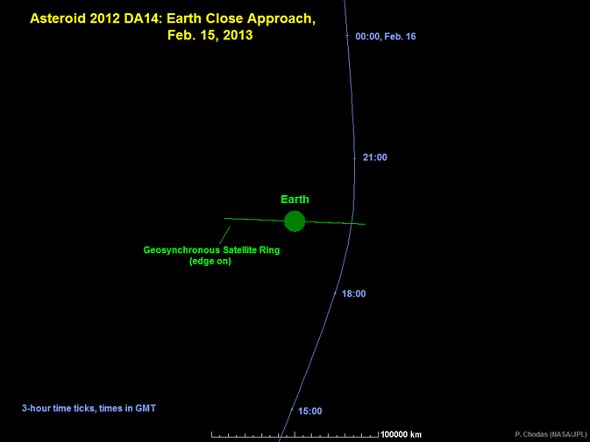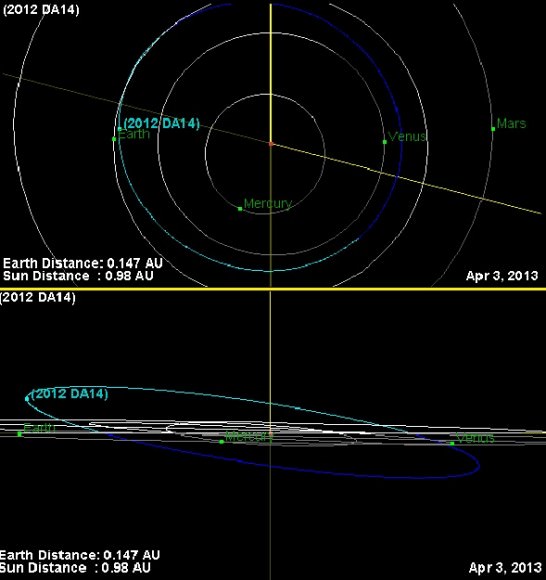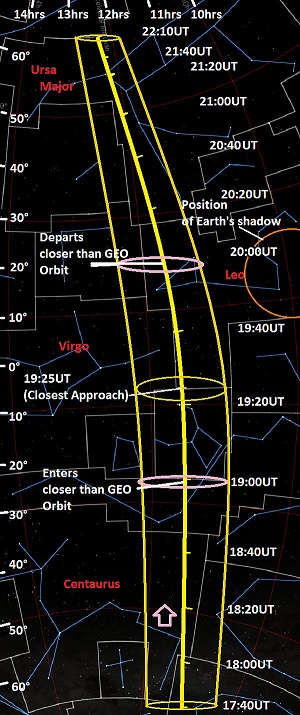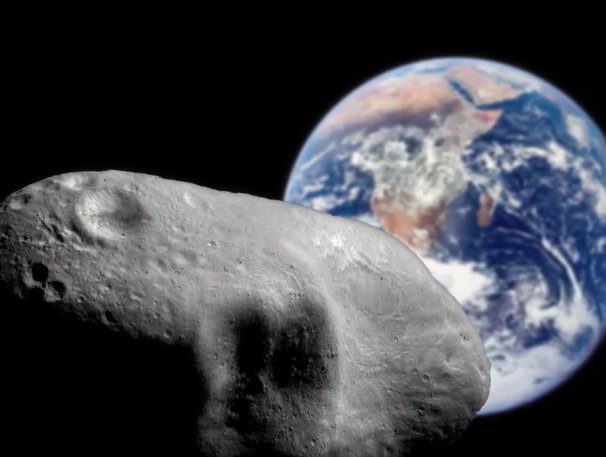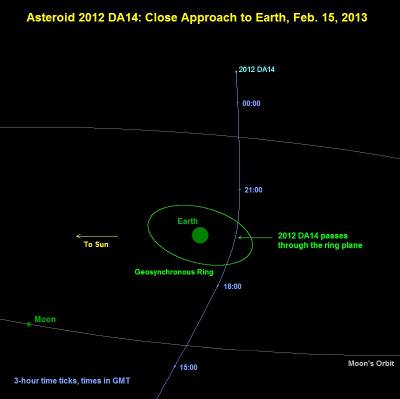The uncanny — but unrelated — combination of today’s close flyby of Asteroid 2012 DA14 and the meteor that created an airburst event over Russia has many wondering how we could deal with future potential threats to Earth from space. A group of researchers are hoping to aim a laser-blasting vaporizer in its direction and blow it away.
Dubbed DE-STAR, or Directed Energy Solar Targeting of Asteroids and exploRation, the theoretical orbital system is designed to convert the sun’s energy into laser blasts that would annihilate any cosmic intruders bearing down on Earth.
Although the system sounds like a plot from a science fiction movie, the researchers — led by scientists at two California universities — maintain that it is built on sound principles.
“This system is not some far-out idea from Star Trek,” stated Gary Hughes, a researcher and professor from California Polytechnic State University, San Luis Obispo, in a press release.
“All the components of this system pretty much exist today. Maybe not quite at the scale that we’d need – scaling up would be the challenge – but the basic elements are all there and ready to go. We just need to put them into a larger system to be effective, and once the system is there, it can do so many things.”
Construction details were not clear in a press release advertising DE-STAR, but the researchers describe astonishing results from even a modest-sized version of the system.
DE-STAR was modeled at several different sizes. At 328 feet (100 meters) in diameter, which is double the International Space Station’s size, it could “start nudging comets or asteroids out of their orbits,” Hughes stated.
A 6.2 mile (10-kilometer) DE-STAR version could send 1.4 megatons of energy daily to the marauding asteroid, providing enough juice every year to kill a space rock as big as 1,640 feet (500 meters) across. (That’s more than 10 times the size of 2012 DA14, which came within 17,200 miles of Earth Feb. 15.)
“Our proposal assumes a combination of baseline technology –– where we are today –– and where we almost certainly will be in the future, without asking for any miracles,” added Philip Lubin, who is with the University of California, Santa Barbara.
Besides asteroid annihilation, DE-STAR could give a fuel boost to long-distance space travellers.
A proposed DE-STAR 6 (size not disclosed) is advertised as able to push “a 10-ton spacecraft at near the speed of light, allowing interstellar exploration to become a reality without waiting for science fiction technology such as ‘warp drive’ to come along.”
The press release did not reveal a budget for any version of the DE-STAR, how it would be constructed, or how quickly the system could begin fencing with asteroids.
Researchers emphasized, however, that system proposals such as theirs must be taken seriously to ward off incoming space rocks.
“We have to come to grips with discussing these issues in a logical and rational way,” stated Lubin.
“We need to be proactive rather than reactive in dealing with threats. Duck and cover is not an option. We can actually do something about it and it’s credible to do something. So let’s begin along this path. Let’s start small and work our way up. There is no need to break the bank to start.”
Source: UCSB

